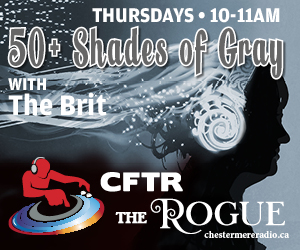Readers in the audience with an archeological bent may wonder how beer was made before the availability of metal brewing vessels.
Students of history will remember that archeologists divide human history into three periods; the Stone Age, Bronze Age, and Iron Age, which we are currently in.
Ancient civilizations began the transition from the Stone Age into the Bronze Age starting in approximately 3600BCE, and then into the Iron Age around 1000BCE.
Prior to the Bronze Age, civilization was limited to tools made from wood and stone, which meant that beer was brewed in wooden barrels, rather than the steel vessels in use today.
As you might imagine, the ancient brewmasters were not able to put their wooden barrels over a fire to boil the beer, so they superheated large stones in a fire, then threw the hot stones into a wooden barrel filled with water and barley to initiate the boil.
Beer tasted much different in those days, as yeast had not yet been discovered. All fermentation was spontaneous from wild airborne yeasts, which made it very difficult to maintain consistent flavours or alcohol levels from batch to batch.
At the time, the entire fermentation process was poorly understood, and remained so until the discovery of yeast in 1857. Prior to that time, fermentation was largely trial and error, with a healthy dose of luck and prayer.
Brewing with hot stones pretty much died out in the Bronze Age, as the advanced civilizations of the day were able to craft bronze vessels that could be placed over a fire to boil.
The obvious danger of handling large red-hot stones was likely another motivator for the ancient brewers to take advantage of technological advancements in metallurgy, so it is not entirely unexpected for the old method to have disappeared.
The Bronze Age discoveries started in what is now modern-day Turkey and Iran, then spread throughout Europe and Asia over the centuries.
As you might imagine, the travelling merchants that brought new and improved beer technology were welcome indeed in neighbouring countries, and made small fortunes for scores of itinerant brewers.
In a nod to history, the adventurous brewmaster from local success story Big Rock has recreated this ancient method with a new seasonal brew that they are calling Erratic Stone-Fired Ale.
Trivia buffs in the audience may recall that the Big Rock Brewery is named after a glacial erratic rock just outside of Calgary, which makes this new brew aptly named.
Much experimentation led to a recipe using five different malts and two different hops, which created what Big Rock’s brewmaster feels is a historically accurate example of a thousand-year old beer, which has until now been lost to the ages.
With easy access to world-class malting barley on the prairies of Alberta, and chunks of granite sourced from the Rocky Mountains on the BC side of the border, Big Rock was blessed with the raw materials to recreate this lost method of brewing.
Unlike modern brewing methods, throwing in the hot stones into the brewing vessel will scorch and caramelize some of the malted barley in the brew, leading to a unique smoky flavour with toffee undertones.
Your humble narrator was able to find a well-stocked liquor store carrying the extremely limited run of 3300 bottles, and picked up a few bottles to enjoy with my beer nerd friends.
Pouring a dark and ruddy color into the glass, the distinctive low level of carbonation was the first telltale sign that this was a naturally bottle conditioned beer, which had not undergone forced carbonation like most modern beers.
The flavour was slightly sweet, likely from the caramelized malt caused by the hot stones. The low carbonation levels helped contribute to the malty flavour, as the hop bitterness was not enhanced by the effervescence found in most beers.
Overall, it was a medium-bodied beer, one that would not frighten a novice beer drinker that has been raised on a steady diet of Coors Lite. However, the premium price commanded by these small-run beers will likely attract only the beer cognoscenti.
To find a local beer store with current stock, check the Beer Goggles search tool on the HYPERLINK “http://www.bigrockbeer.com” www.bigrockbeer.com website. Don’t delay, as the entire production run was very limited, and they won’t last long!




